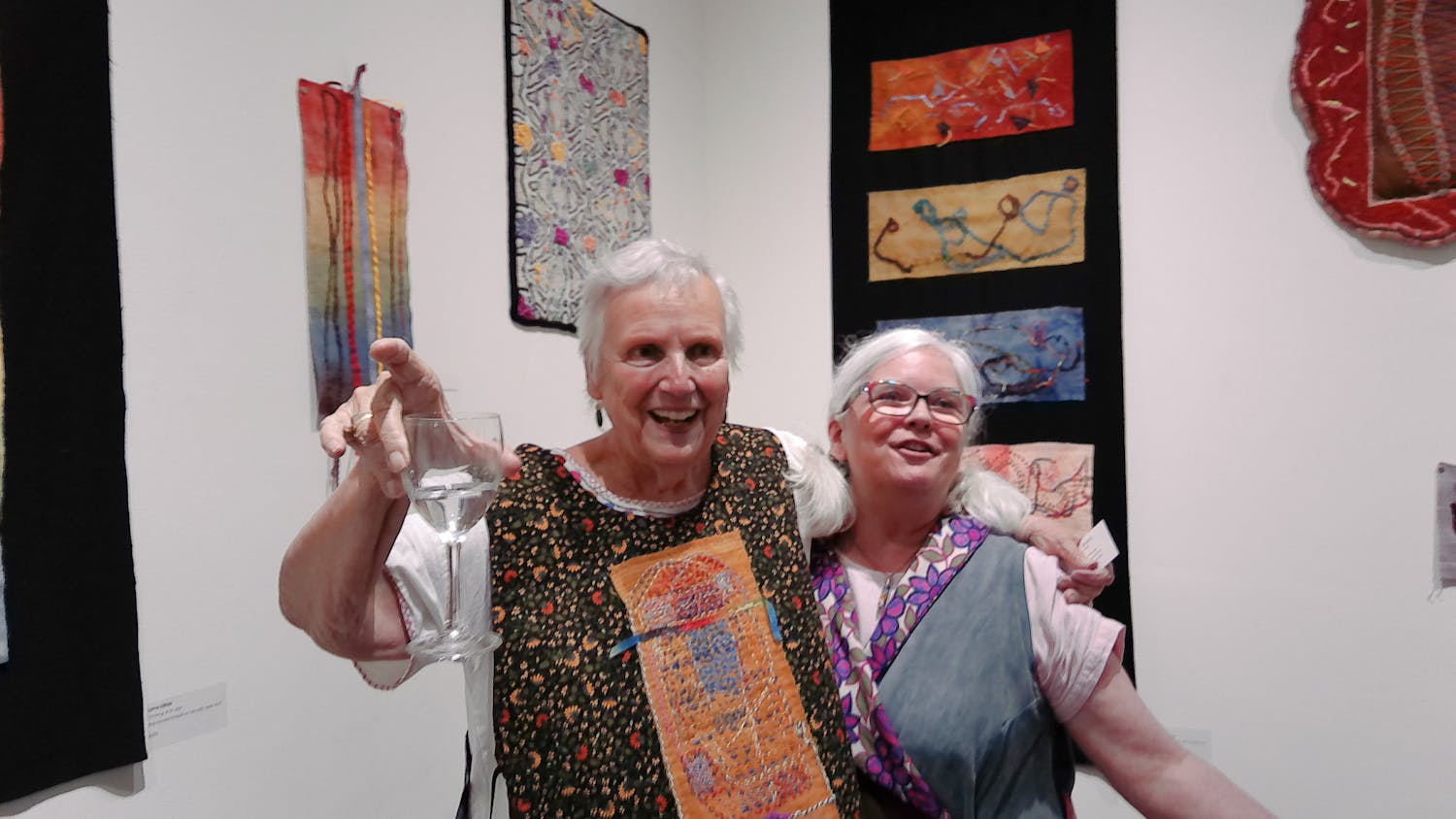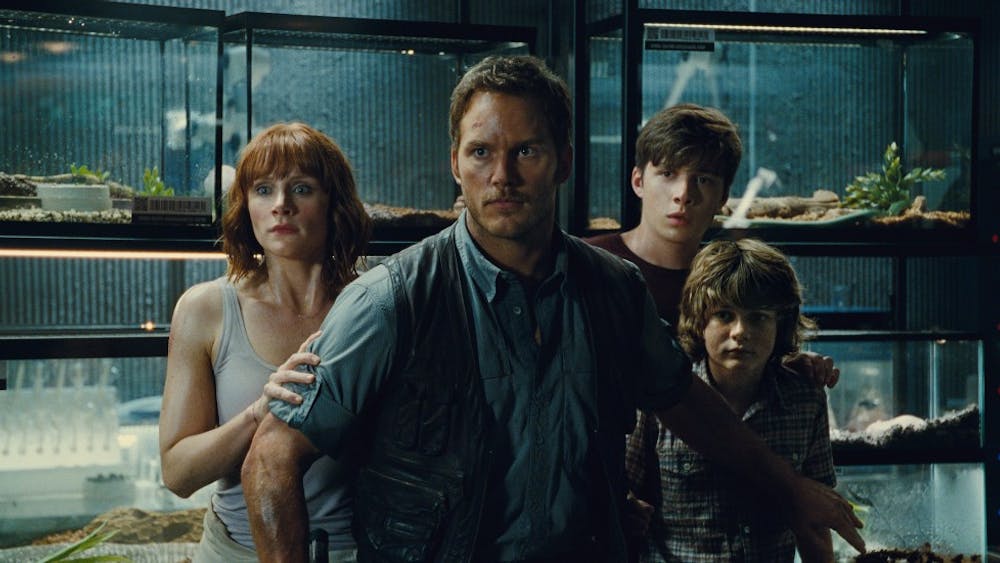He could have just as easily been Johnny Indiana. How about Johnny Puma, Impala or Mustang? It really didn't matter. Introduced to the nation in 1976, Johnny Cougar, a commercial product, was destined to bomb.\n He was the guy who got kicked off the football team for smoking Marlboros. He started smoking pot before others his age and sometimes went to school drunk. He chased girls and spent a lot of time in the backseat. Authority figures existed to be defied. \nMellencamp calls it "that Bad Mellencamp Family Attitude," according to biographer Martin Torgoff. He was determined to be responsible for his own identity, until a passion for rock and roll tattooed him with a stronger purpose: to cut a record in New York. \nThis relentless desire allowed the hype and fiction of British manager Tony DeFries to invade Mellencamp's identity in the mid-70s, spinning into motion a career based on image.\nSeveral years before he met DeFries, Mellencamp showed the same stubbornness that led him to marry 23-year-old Priscilla Esterline against his parent's wishes. Mellencamp was a 17-year-old groom. \nA communications degree from Vincennes University failed to lead to a disc jockey job as he had hoped, and he lost another job installing telephone lines. \nWith plenty of spare time, Mellencamp played regularly at a bar in Seymour called the Chatterbox. He started taking his hobby of performing music more seriously and made a demo tape. \nHe covered a wall with rejection letters before traveling to New York City to be swindled by a phony producer, sending him home broke. It wasn't until a second trip to the city that Mellencamp sparked the interest of DeFries' management company, Mainman. \nIn the book American Fool, Torgoff and Mellencamp discuss the association with DeFries. DeFries was a salesman who had already turned unknown David Jones into David Bowie, splashy glam image and all. \nHe wanted to mold Mellencamp into an all-American hybrid of James Dean and Bob Dylan. The naive Mellencamp invested trust. \nSoon Mellencamp's ability to be himself was stripped away, and the young musician found himself with an unwanted stage name: "Johnny Cougar."\nDeFries would only support the production of an album graced by a name Mellencamp despised. Anxious for a record deal, the Hoosier had no choice but to cooperate.\n"It was ludicrous," Mellencamp says in Torgoff's text. "I didn't want to be anybody but John Mellencamp. I fought my whole life to have some kind of individuality, from grade school up. And now Johnny Cougar was the name that I would be known by." \nSmall Town\nWhen Mellencamp's hyped up "World Debut" was held at the Seymour Armory during Oktoberfest 1976, "Johnny Cougar Day" shocked Seymour residents. His professional career had come out of nowhere, and he had yet to earn the respect of his critics -- in Hollywood or his hometown. \nMellencamp's management company flew in writers from Rolling Stone and other well-known publications and staged a parade, complete with Cougarettes, high-school girls in Johnny Cougar t-shirts. Mellencamp was to land at the concert dangling from a rope ladder attached to a helicopter, but plans fell through. \nCrowd response was good, Torgoff says, but the false image of Johnny Cougar led to Mellencamp's failure to gain respect in the early years of his career. \nHis first album, "Chestnut Street Incident," sold only about 12,000 copies, and most of those were in Indiana. Attempts at becoming a star in Europe, under the guidance of manager Billy Gaff, later bombed as well. Gaff tried to present a more clean-cut Mellencamp, and like DeFries, invested so much with promotions that a letdown was almost certain.\nMellencamp's current bandleader, Mike Wanchic, has played guitar with Mellencamp since the late '70s. \n"We were lucky to grow up in a time when there was a long-term view in the music industry," Wanchic says. "If we had started now, we'd be nothing. Now record companies sign you to a deal for a one-record option. If you don't sell, they drop you."\nBefore the industry could give up on Mellencamp, he surprised critics with "I Need a Lover." He had readopted the gritty, "in your face" look of his youth, and the songwriting abilities of Mellencamp and partner George Green were developing rapidly.\nBy the time he released his next hit single, "Ain't Even Done with the Night," Mellencamp had found a new love interest in Vicky Granucci, the daughter of a Hollywood stuntman. He also found a new drummer in classical and jazz percussionist Ken Aronoff, who'd been playing around Bloomington.\nWhen record executives let Mellencamp produce his own album for the first time in 1982, the result was American Fool. Its first single was "Hurts So Good," which was followed up by "Jack and Diane" and "Hand to Hold On To." American Fool got publicity when Mellencamp and his band, now known as The Zone, performed on Saturday Night Live a week after the release. It went on to receive a Grammy nomination for Album of the Year.
Authority always wins\nWhile Mellencamp was receiving praise for his music, he was also met criticism for frequent outbursts on stage and to the media. There were reports that in London, Ontario, Mellencamp violently threw Aronoff's drum kit into the crowd. \nMellencamp and band members maintain they were angry with promoters for shortening their scheduled set time and providing them with cheap and faulty rental equipment. To spite promoters, the band passed the equipment to fans as souvenirs. \nReporters and writers loved reproducing quotes from Mellencamp, who would often rattle off whatever political or social commentary was on his mind. \nA particular attack on some of his statements, lyrics and video material came during an appearance on CBS' "Nightwatch." Reporter Felicia Jeter confronted Mellencamp about sexually abusive themes she thought might exist in "Hurts So Good." \nShe questioned his rebel image and suggested he should have a responsibility as a role model to his children and fans. A frustrated Mellencamp cursed and walked off stage, adding to his "bad attitude" image. \nRiding the wave of American Fool's success, Mellencamp soon released Uh-Huh, which contained "Pink Houses," "Crumblin' Down" and "Authority Song." The album was recorded in a little more than two weeks at a farmhouse studio near Brownstown, Ind., with the band practically living in the small structure, known as the "Shack."\nThe album's success confirmed Mellencamp's songwriting abilities, with some songs written in only one night. With Uh-Huh, the musician was able to reclaim his surname and record as John Cougar Mellencamp.\nOn Scarecrow in 1985, Mellencamp embraced his roots, extracting such personal songs as "Small Town" and "Minutes to Memories." He also became a spokesperson for the American farmer with the song "Rain on the Scarecrow," a role he would carry into his duties as a founding member of Farm Aid. On September 17 of this year, Mellencamp participated in the 15th anniversary of Farm Aid with co-founders Willie Nelson and Neil Young. \nMellencamp produced several more albums before directing and starring in "Falling From Grace" in 1990. In '91 he dropped "Cougar" from his name. 1992 brought the release of "Whenever We Wanted" and a marriage to current wife Elaine Irwin.\nNot running anymore\nJohn's family provided inspiration for recent songs, as well as subjects for his paintings. Mellencamp began painting with oils in the summer of '88, and his work has been the subject of gallery shows throughout the country. \nIn his book, Mellencamp: Paintings and Reflections, he says painting is more about emotion than technique. He uses the style of French impressionists to create portraits of people in his life, but is more concerned with the emotion his subjects reflect than accurate likeness.\n"I'm searching in them," he says, "just as I was as a kid when I started making music, and in all of them is the need to try to make something out of nothing, just like I did when I wrote my first song." \nIn '94, Mellencamp suffered a heart attack during his Dance Naked Tour. He took some time off before returning to recording. His new songs reflected a fresh willingness to experiment. \nIn '96, he brought in dance-mixer Junior Vasquez to help produce Mr. Happy Go Lucky. The result was a successful blend of rock and dance music, influenced by various rhythms and ancient instruments. The album went platinum within weeks of release.\nA greatest hits album was released in 1997, as was a collection known as The Rough Harvest Sessions, before Mellencamp allied with Columbia Records, who released the album John Mellencamp in 1998. \nMellencamp.com, the musician's Web page, acknowledges the album's theme as "the search for an authentically moral path in life and the struggle to remain true to that path." This is certainly evident with the song "Your Life is Now."\nAs he nears 50, Mellencamp remains as active as anyone in the industry. He recently finished filming "After Image" in Rochester, N.Y,. Mellencamp stars as a police photographer in this low-budget film expected to do well at next year's film festivals. His song, "Yours Forever," appears as the theme for the summer blockbuster "The Perfect Storm." \nMellencamp's Paintings and Reflections continues to bring in money for VH1's Save the Music Foundation, to benefit school music programs. His music was even sampled recently, when Jessica Simpson's "I think I'm In Love With You" used the musical intro to "Jack and Diane." The two artists share the same recording label, and Mellencamp approved of the usage. \nIU athletes are benefiting from John Mellencamp Pavilion, an indoor practice facility completed in '96, for which Mellencamp provided financial backing. In 2000, he received an honorary Doctorate of Music degree from IU, where he spoke at graduation ceremonies. \nIn August Mellencamp offered fans a series of surprise acoustic performances that became known as the "Good Samaritan Tour." It started out as a two-week camping trip with his wife and sons. Mellencamp decided to bring along accordion player Mike Flynn of the Bloomington-based band Old Pike and violinist Merrit Lear. \nThey would give small outdoor performances in cities near their campsites, with announcements appearing on Mellencamp's official Web site the night before each show. \nWanchic says the free concerts were designed to have a folk music feel, with Mellencamp even strumming old Bob Dylan and Woody Guthrie tunes.\n"The intention was to give something back to the (fans) who have given to us for 20 years," Wanchic says.\nThe first shows in Philadelphia and Boston drew several hundred listeners. By the fifth performance, at Chicago's Daley Plaza, the media had begun to leak information regarding shows. \nWanchic and others joined the three musicians. An estimated 15,000 people attended the Chicago event, and the last four stops on the tour each drew more than 5,000 listeners. A final hometown show in Bloomington took place at IU's Woodlawn Field Aug. 31. At a press conference, Mellencamp said he was frustrated with the business and promotions that normally factor into concerts and wanted to try something new.\n"I was tired of everything being so structured in my life, tired of the music business," Mellencamp said.\nWith that same need for change, Mellencamp and the band decided to record their upcoming album in the Florida Keys.\n"Everything since Scarecrow has been recorded at Belmont (Indiana)," says Wanchic. "This time, we rented an air-conditioned warehouse in the Keys to put down our new album."\nHe said the album will most likely be released in March.\nThe band flew to Florida Tues., Oct. 10, to build on five songs they recorded there several months ago. Wanchic says he's excited about the upcoming release that will feature electronic loops, huge guitars and orchestra sounds. \n"John's writing is better than ever," he says. "I think it will be one of the best records we've made in a decade."\nHe won't reveal the album's title, but Wanchic hinted to an upcoming spring and summer release tour. \n"We'll play a lot of outdoor shows, simply because it will be summer," he says. "There's a really nice vibe to playing in open-air venues."\nWanchic attributes successful creative change and loyal fans as reasons Mellencamp and his bands have remained popular into a fourth decade.\n"Each year changes us. We're no longer young, impetuous rock stars," Wanchic says. "We all have families now, and our music's more important as well. We take it a lot more seriously, and we expect the best. Sometimes that's to our detriment. \n"But we know we can't go out and make 'Hurts So Good' again, so we keep trying new things."\nThe weekend of Oct. 7 saw hundreds of Mellencamp fans descend upon Seymour for the third "Mellenfest," a musical convention in honor of a local hero. \n "We\'re really blessed to do this for almost 25 years," Wanchic says. "We know we're lucky to do what we do for a living, and to live where we love (Bloomington)."\nWhile Mellencamp and his band have remained dedicated to their fans and Indiana roots, change has been vital to longevity. No single image has sustained Mellencamp throughout his career, and he most likely will not settle on one any time soon. \nFans and critics often acknowledge the existence of a definitive John Mellencamp. Some see a folk hero, while others see a stubborn radical, but chances are the truth lies somewhere in between. \nAt IU graduation ceremonies last year, Mellencamp shared a life philosophy. \n"There's a secret to having a vision," he says. "You have to be able to reinvent yourself and your vision as time goes on. No one wants to repeat or revisit something they've already accomplished or done"





